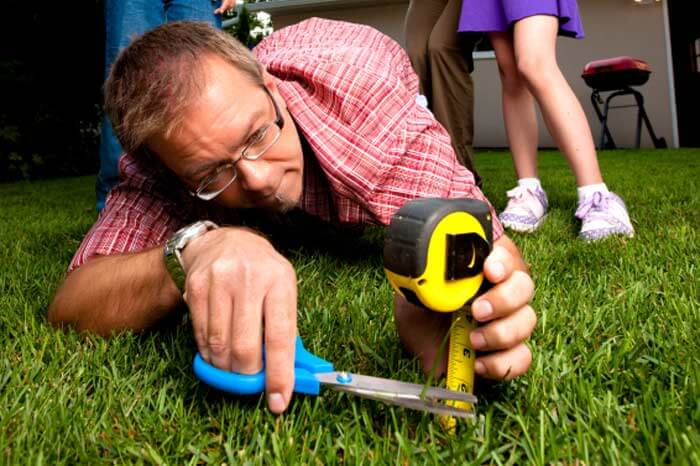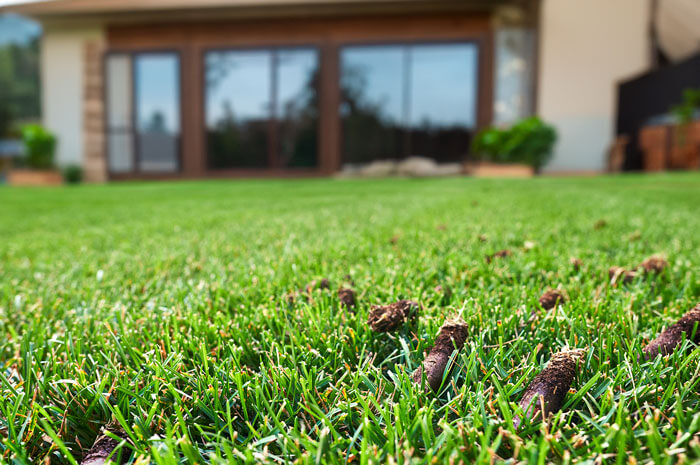
What Mowing Height Should a Lawn Mower Be Set At?
Setting the proper cutting height depends on turf species, climate conditions and time of year. Determine your turf species first and setting the correct lawn mower height should be simple.
Cutting cool season grasses (north of St. Louis).
These are grasses like Blue, Rye, and Fescue grasses. Cool season grasses thrive and are most vigorous in the spring and fall but these grasses suffer the most in the summer due to the heat.
- Summer – The optimal lawn mower height settings for cool season grasses is anywhere from 2” to 3”. It’s generally a good idea to raise your mower’s deck slightly, to about 3”, in the middle of the summer to give the turf a break too.
- Spring/Fall – The optimal cutting height is 2” to 2 ½” in the spring and fall when the turf is the most vigorous.
Cutting warm season grasses (south of St. Louis).
These are grasses like Bermuda, Zoysia, and Bahiagrass. Warm season grasses are the most sensitive coming out of dormancy in the spring and going into dormancy in the fall. These grasses thrive and are most vigorous in the heat of the summer.
- Summer – There is less of a need to raise the deck height to 3″ in summer as these grasses don’t suffer as much from the heat.
- Spring/Fall – Overall, warm season grasses respond a little better to a shorter height of cut, so we recommend setting the mower height anywhere from 1” to 2” in length.
How Do You Measure and Adjust Lawn Mower Height?
Most lawnmowers have labeled levers that make adjusting the height easy. Be aware that the numbers don’t necessarily correspond to the cutting length, so mowing a small patch of grass and measuring the resulting height can be a good way to ensure you aren’t cutting too short. A good rule of thumb is to never remove more than 1/3 of your lawn’s height in a single mowing and don’t take off more than 1 inch at a time. You might be cutting cut twice a week when the grass is in its peak growing season, but the payoff will be a healthier, better-looking lawn.
What Height Should New Grass Be Cut?
For your first mowing, remove just enough (1/2- to 3/4-inch) to give your lawn an even appearance. Next time, set your mower to cut to the maximum height recommended for your type of grass, but do not remove more than 1/3 of the blade in any single mowing.
How Tall Should You Let New Grass Grow Before Cutting?
Sod: Do not mow a sodded lawn for at least 10 days after installation and until the grass has begun to grow vigorously.
Seed/Plugs/Sprigs: Begin mowing after the grass has grown to a height of 3 or 4 inches — before it falls over in a slight breeze.
Is it Better to Cut Grass Short or Long?
It’s better to cut grass long. When left a little tall, grass shades the soil, so it retains moisture better and promotes cooler soil and healthier grass. Keeping grass longer also means more surface area for photosynthesis, which also results in improved health.
In addition, taller grass grows slower than shorter grass, which means up to 20 percent less mowing (about eight hours) annually. It also helps prevent weeds from growing—eliminating the need for herbicides.
What Happens When You Cut Grass Too Short?
Cutting grass too short forces it to tap into food reserves, which stresses the roots and will eventually thin out your turf. Short grass also means a shallow root system, so keeping it on the longer side will let the root system penetrate deeper into the soil to harvest moisture and nutrients for supporting the top of the plant.



